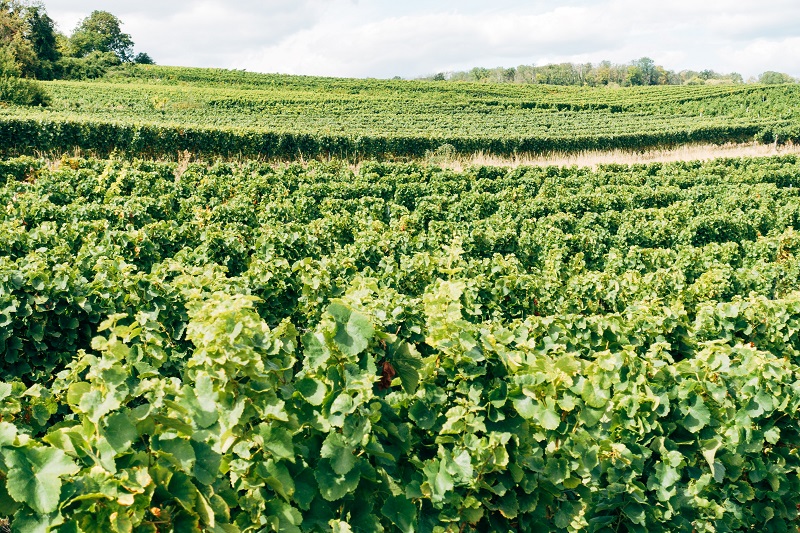HLB Solutions Lead Agenda At 2014 Florida Citrus Show
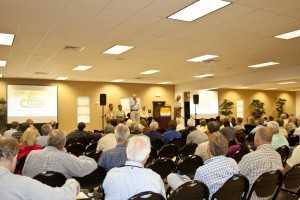
Two days of education programs are jam-packed with important information for citrus growers.
Florida citrus growers generally agree that the road to solutions for HLB and other pests and diseases will be a long and winding path. This road will lead to numerous approaches that will help growers find a way to remain productive and profitable in the future.
There’s no better place to learn about these solutions than the Florida Citrus Show (CitrusShow.com) in Ft. Pierce. The event will be held at the Havert L. Fenn Center on Jan. 29-30 and is jam packed with vital information for the modern challenges of citrus production.
The show is a multifaceted event hosting two days of educational sessions, more than 80 suppliers of citrus production goods and services, and an excellent opportunity for growers to mix and mingle with their peers.
“The Florida Citrus Show continues to be a venue for growers to come together to learn about how to successfully produce citrus in our challenging environment,” says Gerry Bogdon, group publisher of Florida Grower magazine. “With an expansive trade show, it also represents a great networking opportunity for everyone who makes a living through our signature crop.”
Get The Drop On Fruit Drop Are you planning to attend the 2014 Florida Citrus Show? Total Voters: 14
![]() Loading ...
Loading ...
Without question, fruit drop was the top story last season. Greg McCollum, a plant physiologist with USDA, will present findings on the connection between HLB and excessive fruit drop during the Show. He says that any stress put on HLB-infected trees is increasingly problematic and will likely enhance the amount of drop. “Treatments that are effective in reducing fruit drop in otherwise healthy trees may reduce drop in HLB-affected tress,” says McCollum. “Other than observations by folks in the field, we know very little about HLB-induced fruit drop. We can’t just extrapolate results from healthy trees and expect the same for HLB-affected trees. It is unlikely, in my opinion, that there will ever be a treatment to overcome HLB-related fruit drop, but without research there is no way to know.”
*Click here to see 2014 Florida Citrus Show Program Highlights*
Market Dynamics
Growers have stepped up their game in dealing with HLB through aggressive psyllid control programs and enhanced nutrition applications. They are spending anywhere from $2,000 to $2,200 per acre on production with these costs/anti-HLB measures. That is more than double what they spent before HLB came on the scene in 2005.
Higher prices are needed to support the aggressive measures growers are using to address HLB. Matthew Salois, an economist with the Florida Department of Citrus, will speak on the changing market dynamics impacting the industry during the Show.
Salois says high on-tree prices can be achieved in the short run, but growers should be concerned about the long-term economic relevance of the industry. “The persistent trend of tree mortality rates exceeding tree planting rates sets a downward course of for production,” he says. “Support will be needed for enhanced budwood supply and an expansion of nursery capacity is critical to the production infrastructure and will promote increased plantings.”
Replanting Strategies
Replanting and supporting the state’s citrus infrastructure will be an important part of the Citrus Show program. An entire session will feature the question — “Is It Time To Replant?” The session will present an economic case study on replanting options by Spike Schultheis of the Small Business Development Center.
Phil Rucks, owner of Phillip Rucks Nursery, will present how the nursery industry is gearing up for increased plantings. In addition, a grower panel will provide insights on how individuals are approaching planting decisions.

More than 80 exhibitors on the tradeshow floor give growers a glimpse of the goods and services they need for successful citrus production.
Rootstocks And Scions
There is a lot of excitement surrounding new rootstocks and varieties, especially those that might provide some level of resistance to HLB. Ed Stover, a horticulturist with USDA, will discuss HLB resistance in existing cultivars at the Citrus Show.
“There are some conventional citrus scions with much greater tolerance to HLB than are sweet orange or grapefruit, at least to local strains of the HLB pathogen,” he says “These resistant types are being tested extensively to better understand how well they perform when subjected to HLB within the first year of planting.
“We are most excited by some very sweet orange-like selections we have, which appear to be more HLB tolerant than true sweet oranges. Our biggest fear is that there may be different strains of the HLB pathogen already in Florida, which may be more virulent in our seemingly tolerant selections. This will be tested over the next two years.”
A session also will be dedicated to sour orange rootstock, which is back in the spotlight after regaining popularity among growers. The program will focus on whether or not sour orange makes sense in today’s environment.
Innovative Treatments
It is fair to say that growers and researchers have thrown just about everything but the kitchen sink at HLB in recent years. The Florida Citrus Show will highlight these high science and novel tactics. Imagine a psyllid that is incapable of transmitting HLB, which could potentially disrupt the pest’s ability to spread the disease. A federally funded project is currently under way called nuPsyllid and its aim is to create such a bug.
Kirsten Stelinski, an entomologist with UF/IFAS, will discuss the nuPsyllid project. “The take-home point that I hope to convey to growers is although this project is high risk, it offers a probable high reward tool for mitigating HLB’s bacteria transmission,” she says. “And, the information obtained by researchers in the course of developing a nuPsyllid should result in the development of additional new integrated pest management tools and the identification of new mechanisms that can be exploited to disrupt the Asian citrus psyllid.”
There’s been a great deal of interest in the potential of exposing HLB-symptomatic trees to high heat to “sweat” the disease out. USDA and UF/IFAS are looking at thermotherapy as a potential method to restore declining trees.
Reza Ehsani, an ag engineer with UF/IFAS, will present the early, but encouraging results with heat treatments on HLB. He will discuss how the temperature and duration of heating will impact the effectiveness of the treatment.
“Uniformity of heat throughout the canopy and temperature control is critical,” says Ehsani. “Relying just on solar heat treatment could provide mixed results. The heat treatment needs to be conducted along with a good nutrient and psyllid control program to make heat treatments more effective.”
Wayne Hunter, a research entomologist with USDA, will update growers on his genetic research into managing psyllids through the disruption of the pest’s RNAi. Hunter’s techniques have already been used in managing a honey bee pest with groundbreaking success.
Back To The Basics
Nutritional therapy to reinvigorate declining trees and aggressive psyllid control remain the go-to tactics in the battle against HLB. Michael Rogers, an entomologist with UF/IFAS, will provide his annual update on the latest knowledge on psyllid management and avoiding the potential for resistance to important pesticides.
Bob Rouse, a citrus horticulturist with UF/IFAS, has the longest running trial of nutritional therapy applications to combat HLB. The data he’s collected over the years has become an invaluable resource for growers fighting the disease.
“I will tell Citrus Show attendees about our 32-acre Valencia trial in a commercial grove,” says Rouse. “We have five years of yield, maturity, and juice quality data. The experimental plots are about 100 trees each and a good representation of what growers can expect.
“This is a trial where we evaluated the Maury Boyd foliar nutritional cocktail and treatments ranged from the complete cocktail mixture to treatments that had one, two, or more components left out of the mix. This gave us every possible combination of the ingredients in the full cocktail as treatments.
“The new knowledge will be an economic analysis by Fritz Roka, an economist with UF/IFAS, considering all the ingredients have a cost factor associated with them. The take-home message for attendees of the Show may be that the highest yield producing treatment was not the most economical with best returns when factoring in the cost of products.”
→ Must-See Stops At The 2014 Florida Citrus Show
Must-See Stops At The 2014 Florida Citrus Show
The two-day gathering contains a full schedule throughout. In addition to the exceptional educational session agenda and robust trade show, Florida Citrus Show attendees can take their pick from a plethora of planned activities.
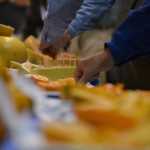 Citrus Tasting/Samples
Citrus Tasting/Samples
Always a surefire treat for the senses, the citrus sampling stations are among the most popular attractions at the Florida Citrus Show. The latest varieties under development from UF/IFAS and USDA breeders are laid out for attendees to see, touch, smell, and taste. The breeders are on hand to answer questions about what could be your new favorite slice of citrus.
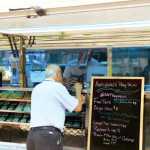 Let’s Eat
Let’s Eat
Come and get it. The catered lunch break gives everyone some time to replenish and rehash what they have already seen and heard with their peers. New to this year, a convoy of food trucks will be parked outside and ready to give attendees a menu of dining options.
Meal tickets are complimentary to those who pre-register. Additional lunch vouchers can be purchased on site.
Enter And Win
Even though it’s a free event, Florida Citrus Show attendees walk away with a lot of value. During the Show, multiple suppliers will hold prize giveaways at their booths. Visit the vendors around the tradeshow floor, enter to win, and stick around to see if you won. Some of the giveaways include an original piece of Sunshine State-flavored contemporary art from The Florida Highwaymen (courtesy of YARA)
 and a John Deere gun safe (a $1,200 value!) courtesy of Everglades Farm Equipment.
and a John Deere gun safe (a $1,200 value!) courtesy of Everglades Farm Equipment.

And There’s More …
Other prizes include an iPad Mini from Wellmark 
…Plus:
- 10 ACRES OF FERTILIZER compliments of ProPlus Products. Everyone pre registered for the Florida Citrus Show is automatically entered for the drawing. As a bonus, stop by the Agro Select by ProPlus booth (Booth 90 ) and enter to win a second and third giveaway of 10 acres of fertilizer!
- A $100 GIFT CARD from Bass Pro Shops compliments of FMC Corp.
- MODEL AIRPLANES from Southeastern Aerial Crop Service
and more.
Learning On The Go
The Mosaic Co.’s Mobile Express (“Big Mo”) will be parked outside of the Fenn Center. The custom 42-foot motor coach provides an educational journey through the history, operations, and benefits of Florida phosphate and its importance to global farming and food production.
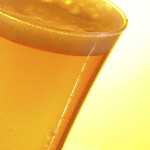
Party Time!
At the conclusion of Day 1, unwind after the educational sessions by visiting the Dow AgroSciences booth (#92) on the tradeshow floor for a free reception featuring cocktails and hors d’oeuvres. In addition to eating, drinking, and being merry, Dow will be giving away great prizes every half hour.
See you in Ft. Pierce!
Click here to register for the Show.







